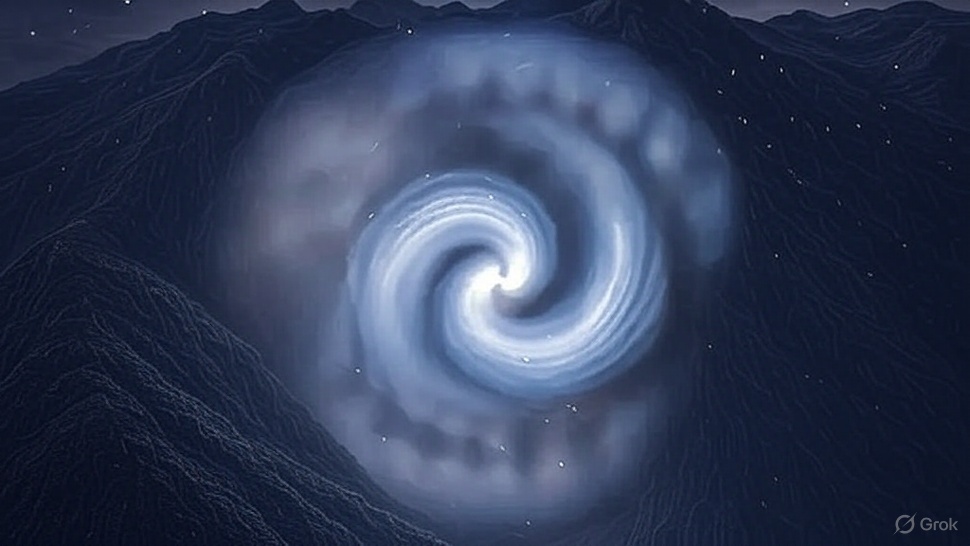Enigmatic Blue Spiral Lights Up European Night Sky: What Caused It?

March 25, 2025 – A mesmerizing blue spiral illuminated the night sky across Europe on Monday evening, March 24, leaving stargazers and social media abuzz with speculation. From the United Kingdom to Poland, Norway to Ukraine, reports flooded in of a glowing, swirling pattern that captivated onlookers for several minutes before fading into the darkness. Initial theories ranged from alien visitations to cosmic anomalies, but experts have since provided a more earthly explanation tied to a recent SpaceX rocket launch.
The phenomenon was first widely noticed around 8:00 PM GMT (9:00 PM CET), with sightings reported across a vast swath of the continent, including the UK, France, Germany, Denmark, Norway, Poland, Ukraine, and even as far east as parts of western Russia. Photographs and videos shared online depicted a striking blue spiral, sometimes appearing white to the naked eye, unfurling against the starry backdrop. "It looked like a galaxy spinning in the sky," said Merlin Tomkins, a UK resident who captured the event on camera. "I’ve never seen anything like it—it was otherworldly."
Social media erupted with excitement and curiosity. Some users jokingly suggested it was a portal to another dimension, while others speculated about extraterrestrial origins. However, within hours, a more grounded explanation emerged, pointing to a man-made source: a SpaceX Falcon 9 rocket launch.
According to the UK’s Met Office and multiple space experts, the spiral was likely the result of a SpaceX launch that took place earlier that day. On March 24, at 1:48 PM EDT (5:48 PM GMT), a Falcon 9 rocket blasted off from Cape Canaveral Space Force Station in Florida, carrying a secretive payload for the National Reconnaissance Office (NRO) as part of the NROL-69 mission. The timing aligns with the appearance of the spiral over Europe approximately 14 hours later, though the extended delay has raised some questions.
SpaceX spirals, as they’ve come to be known, are not a new phenomenon. They occur when the rocket’s second stage, after deploying its payload, performs a de-orbit burn and vents excess fuel. At high altitudes, this fuel freezes into ice crystals, which can catch sunlight—even when it’s dark on the ground—creating a luminous, spinning pattern as the rocket rotates. "The rocket’s frozen exhaust plume spins in the atmosphere and reflects sunlight, causing it to appear as a spiral in the sky," the Met Office explained in a statement on X.
Astronomer Olivier Staiger, who has tracked similar events, noted that the Falcon 9’s second stage likely executed this maneuver over the Atlantic or northern Europe, allowing the spiral to be visible across such a wide area. "During missions like this, the second stage remains in rotation during its de-orbit burn, which creates that distinctive shape," Staiger said. The blue hue, often captured more vividly by cameras than seen by the naked eye, is attributed to the specific composition of the fuel and the way it scatters light.
This isn’t the first time SpaceX has left its mark on the night sky. Similar spirals have been spotted over Norway and Iceland in March 2024, Alaska in April 2023, and New Zealand in June 2022, each tied to Falcon 9 launches. In those instances, photographers marveled at the eerie beauty of the display, often set against the Northern Lights or other natural wonders. Monday’s event, however, stood out for its visibility across an unusually large region, prompting renewed fascination—and some relief that it wasn’t a sign of extraterrestrial visitors.
While the rational explanation has satisfied most, a few remain skeptical about the timing. Typically, such spirals appear within hours of a launch, not half a day later. "It’s unusual for the effect to linger this long," admitted one X user, echoing a sentiment shared by others. Still, no alternative theories have gained traction, and the consensus points firmly to SpaceX.
For those who witnessed it, the event remains a stunning memory. "Even knowing it’s a rocket, it’s hard not to feel a sense of wonder," said Bettina Begtoft, a photographer from Norway who captured a previous SpaceX spiral in 2024. "It’s a reminder of how human ingenuity can mimic the mysteries of the universe."
As SpaceX continues its ambitious launch schedule—already a routine player in the skies of 2025—these celestial displays may become less mysterious but no less spectacular. For now, Europe’s latest brush with a blue spiral serves as a testament to the intersection of technology and the timeless allure of the cosmos.